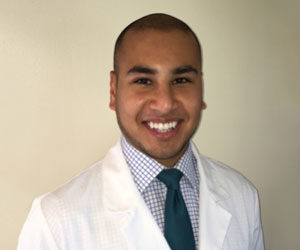As a new second-year orthodontic resident, I reflect back on my first year of clinical experiences and recognize the importance of patient engagement and the personal approach to orthodontic care. In the beginning of my program I found it difficult to connect with patients and to have them express their true concerns, especially with younger patients. The advice I received from an attending can be applied to every human interaction: “people don’t care how much you know until they know how much you care.”
Scenario one: The orthodontic resident approaches the patient chair and vocalizes to the parent of a 12-year-old patient the need for complex treatment, detailing the appliances and biomechanics that will be utilized.
Scenario two: The orthodontic resident approaches the patient chair, greets the same patient and parent by name, and asks how their day is going. Following this, the orthodontist asks about the patient’s treatment goals and discusses how, as a team, they can achieve these objectives together.
It is obvious which situation is more appealing to patients, yet providers question why, with the same training, one orthodontist can be more successful than another. These scenarios emphasize the significance of building a patient connection in order to foster trust between patient and provider when evaluating for orthodontic treatment.
Patients enter any dental treatment apprehensively, and it is the role of the orthodontist to create a more welcoming environment where a patient can actively participate in their own care. There is a balancing act that the provider needs to articulate between caring for a patient’s chief complaint while comprehensively treating the dentition. By incorporating the patient’s opinion, even in small matters such as the color of an appliance or elastic tie, the patient is more likely to care about the treatment they are receiving.
Perhaps the most important aspect of patient care comes not from what the provider says, but rather what the provider hears. When a self-conscious patient comes into the office with a chief complaint of a crooked tooth, sometimes it is best to listen to the story, and what outcomes the patient desires before interjecting. From listening during this brief interaction, numerous treatment approaches can be analyzed. Although assumptions should not be made, some of the indications that the patients provide include their compliance level, economic stability, any apprehension to treatment, and history of care. This information guides the orthodontist to formulate the best overall case management.
In scenario two, teamwork was established between the provider and patient. This creates a more welcoming environment for everyone involved, as proper treatment depends on full cooperation and understanding at all levels. Helping the patient comprehend the equal importance of both esthetics and functionality can be a challenging endeavor. Once the provider explains the terminology at an appropriate level of understanding though, I’ve learned that the patient is more apt to become engaged in their care. In scenario one, there is no personal interaction between the parties involved in orthodontic treatment. Without individual attention, details can become convoluted and objectives can remain unclear to an insecure or intimidated patient.
By providing patients active involvement in their own care, goals will be vocalized by both parties and proper treatment guidelines can be established. Throughout my first-year residency experiences I’ve found that adding a personal approach to treatment motivates patients to comply with instructions more fully. Together, when objectives are reached and the patient leaves the office with a beautiful smile, the orthodontist and patient create a cherished relationship and have a more gratifying overall experience.
Shaheen Youssef, D.D.S.
Post-Doctoral Resident in Orthodontics
University at Buffalo School of Dental Medicine

